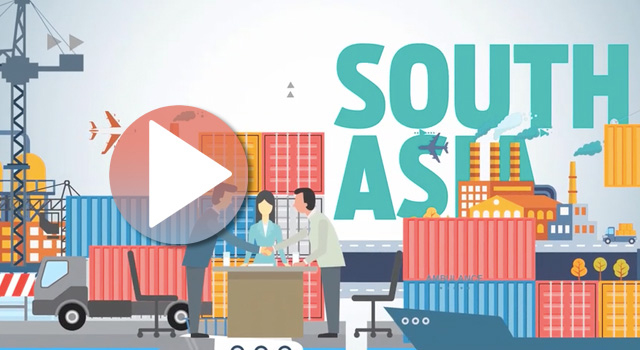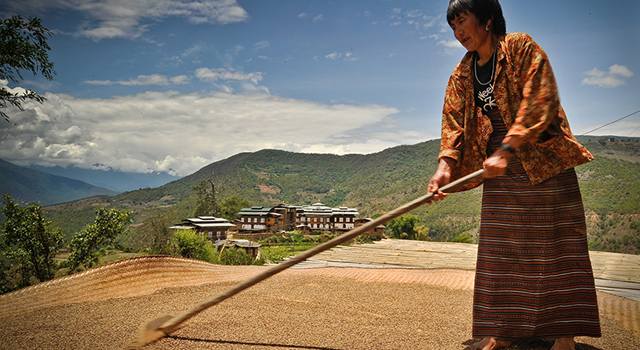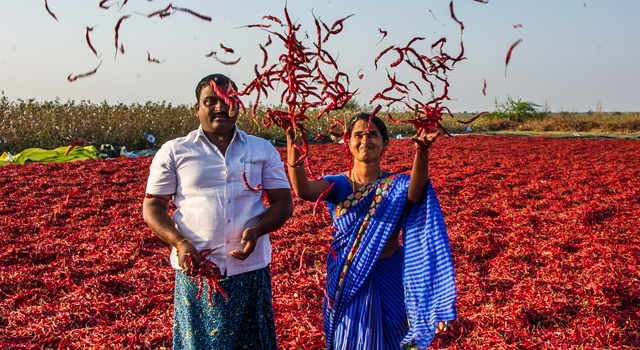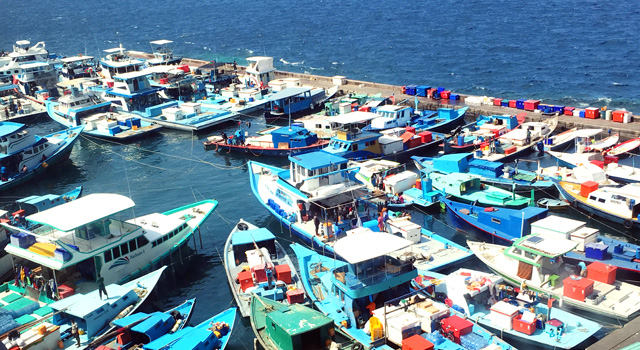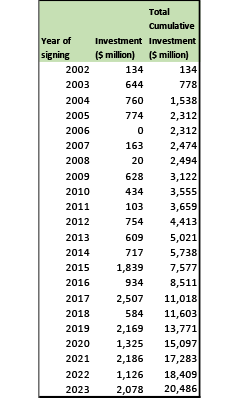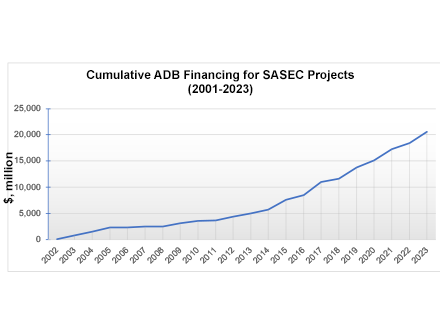What is SASEC
The South Asia Subregional Economic Cooperation (SASEC) program brings together Bangladesh, Bhutan, India, Maldives, Myanmar, Nepal, and Sri Lanka in a project-based partnership that aims to promote regional prosperity, improve economic opportunities, and build a better quality of life for the people of the subregion. SASEC countries share a common vision of boosting intraregional trade and cooperation in South Asia, while also developing connectivity and trade with Southeast Asia through Myanmar, to the People’s Republic of China, and the global market.
SASEC Vision
The SASEC Vision, and its supplement, SASEC Vision – Myanmar, articulate shared aspirations of SASEC countries, and set the path to achieve these through regional collaboration. These documents lay out a plan to transform the subregion by leveraging natural resources, promoting industry linkages for the development of regional value chains, and expanding the region’s trade and commerce through the development of subregional gateways and hubs.
SASEC Operational Plan
The SASEC Operational Plan presents the strategic objectives of the SASEC partnership, and the operational priorities of the four main SASEC sectors—transport, trade facilitation, energy, and economic corridor development. It is supported by a list of potential projects regularly updated by SASEC countries to be implemented during 2016-2025.
SASEC Projects and Technical Assistance
As of December 2023, SASEC countries have signed and implemented 86 ADB-financed investment projects worth around $20.54 billion in the transport, trade facilitation, energy, economic corridor, health, and tourism sectors. The transport sector accounts for the majority of projects (49 projects worth around $14.40 billion), followed by economic corridor development (7 projects worth around $2.32 billion), trade facilitation (7 projects worth $380.65 million), and ICT (2 projects worth $20.80 million). The health sector added $414.92 million to strengthen COVID-19 recovery through 3 regional cooperation projects while there are 2 tourism projects worth $81.51 million.
ADB-financed technical assistance has supported SASEC investment projects throughout the subregion, regional cooperation forums and knowledge-sharing initiatives, and pilot projects since 2001. A total of 152 national and regional technical assistance projects (cumulatively worth $217.70 million) have assisted countries in strategic planning, project preparation, and have supported SASEC forums, and capacity-building and knowledge-sharing events.
Trade Snapshot
The tables below give a snapshot of trade, from 2021 to 2023, in the SASEC subregion, using International Monetary Fund (IMF) data on export, import, and international trade. Intraregional trade share among SASEC countries remained the same in 2023 after having moved down by 1% in 2022 compared to 2021.
Trade - Export/ Import

Source: IMF Direction of Trade Statistics via ARIC Database, as of April 2024
Logistics Performance Index (LPI)
The average 2023 LPI score for Bangladesh, Bhutan, India, and Sri Lanka is 2.9. The four countries garnered an average score of 2.6 for customs; 2.5 for infrastructure; 2.8 for international shipments; 2.9 for logistics competence; 2.8 for tracking and tracing; and 3.1 for timeliness. No new data is available for Maldives, Myanmar, and Nepal.

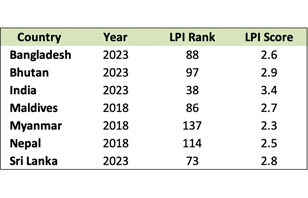

Source: World Bank LPI (accessed May 2023)
Note: The LPI overall score reflects perceptions of a country's logistics based on six core dimensions: (i) efficiency of customs clearance process, (ii) quality of trade- and transport-related infrastructure, (iii) ease of arranging competitively priced shipments, (iv) quality of logistics services, (v) ability to track and trace consignments, and (vi) frequency with which shipments reach the consignee within the scheduled time. The scores for the six areas are averaged across all respondents and aggregated to a single score using principal components analysis. A higher score indicates better performance.
Economic Outlook
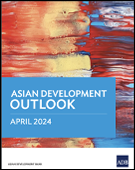
Robust growth is forecast for South Asia in fiscal year (FY) 2024, driven by strong gains in investments, consumption, and the electronics and services sectors. Gross domestic product (GDP) is estimated at 6.3% in FY2024 and 6.6% in FY2025 in South Asia. In Bangladesh, GDP growth is projected at 6.1% in FY2024 behind the growth of traditional low-end garments. Bhutan's projected GDP is at 4.4% given major developments in the country's hydropower sector. In India, GDP is forecast at 7.0% in FY2024, after a strong momentum in manufacturing and services in FY2023 and with exports expected to pick up in FY2025. Growth in Maldives is estimated at 5.4% in FY2024 supported by tourism and construction. Nepal is estimated to grow at 3.6% backed by hydroelectric production and domestic demand. Amid recovery efforts in Sri Lanka, modest growth at 1.9% is forecast for the country in FY2024. In Southeast Asia, Myanmar's GDP is projected to remain low at 1.2%.
Source: Asian Development Outlook April 2024 (ADB)
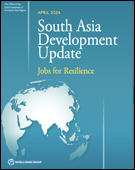
Real GDP in South Asia is estimated to grow at 6.0% in fiscal year (FY) 2024 and 6.1% in FY2025, backed by strong growth in India and the rest of South Asia, outperforming other emerging market and developing economies. In Bangladesh, GDP growth is projected at 5.6% in FY2023-2024 and 5.7% in FY2024-2025; while Bhutan growth is projected at 4.9% in FY2023-2024 and 5.7% in FY2024-2025. Robust growth is projected for India at 7.5% in FY2023-2024 and 6.6% in FY2024-2025. Growth will be on an upward trajectory for Maldives at 4.7% in FY2024 and 5.2% in FY2025; for Nepal at 3.3% in FY2023-2024 and 4.6% in FY2024-2025; and for Sri Lanka at 2.2% in FY2024 and 2.5% in FY2025. In Southeast Asia, the Myanmar Economic Monitor projects GDP to grow at 1.0% in FY2024-2025.
Source: South Asia Development Update April 2024 (WB)
